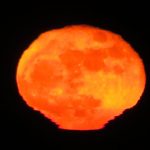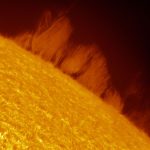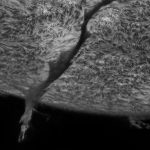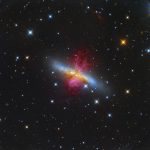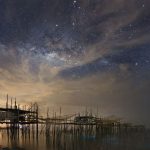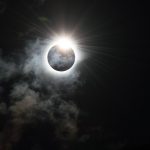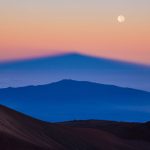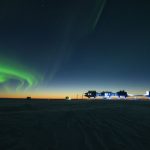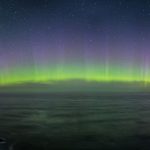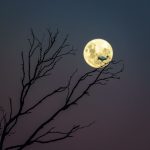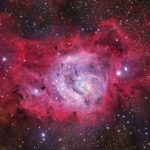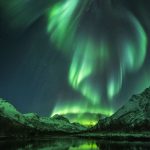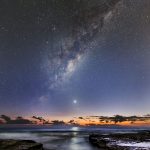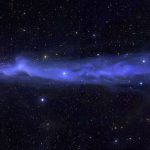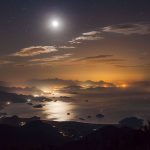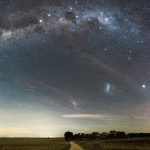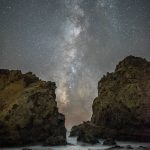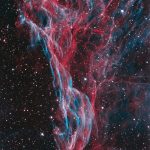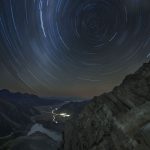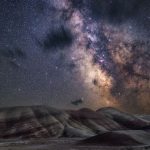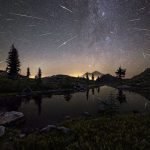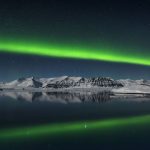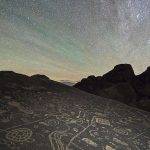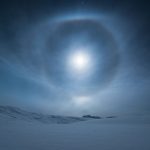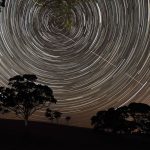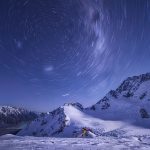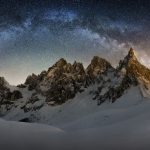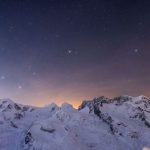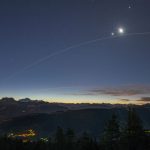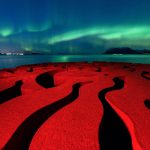Best space photographs
 Here are 31 of the best space photographs of the year
Here are 31 of the best space photographs of the year
BY DUSTIN DRANKOSKI AND MIRIAM KRAMER From Mashable
Bright green auroras dance above a Norwegian lake in just one of dozens of new photos shortlisted for a 2016 astrophotography prize.
The shortlisted photos, chosen for the Insight Astronomy Photographer of the Year 2016, reveal everything from an amazing image of the International Space Station to star trails circling stark landscapes around the world.
Winners will be announced on September 15 in a variety of different categories honoring the best photos of the moon, planets, galaxies, the sun and other cosmic sights.
“The competition, which is run by the Royal Observatory Greenwich in association with Insight Investment and BBC Sky at Night Magazine, is now in its eighth year and continues to go from strength to strength, receiving a record number of over 4,500 spectacular entries from enthusiastic amateurs and professional photographers from over 80 countries spanning the globe,” a statement from the organization says.
Here’s a look at some of the most stunning pictures.
The rusty red swirls of the circular, iron sculpture Seven Magic Points in Brattebergan, Norway mirror the rippling aurora above. IMAGE: RUNE ENGEBØ
A Royal Spoonbill sits atop of a branch basking in the glow of the nearly full moon in Hawke’s Bay, New Zealand.
IMAGE: ANDREW CALDWELL
Taken from Sefton Bivouac, the oldest hut in Mount Cook National Park, New Zealand, star trails spiral over the majestic mountains of the park and the seemingly peaceful village below.
IMAGE: LEE COOK
With temperatures close to -15 degrees, it’s not surprising that the photographer was the only soul in the vicinity of Plateau Hut in Mount Cook National Park, New Zealand. The lonely hut, dwarfed by the snowy mountains of the park, contrasts with the abundance of star trails seemingly encircling the peaks.
IMAGE: LEE COOK
A view of the Halley 6 Research Station situated on the Brunt Ice Shelf, Antarctica, which is believed to be the closest thing you can get to living in space without leaving Earth, making it perfect to be used for research by the European Space Agency. As the sun’s light dissipates into the horizon, the southern lights can be seen swirling overhead.
IMAGE: RICHARD INMAN
The vivid green Northern Lights resemble a bird soaring over open water in Olderdalen, Norway.
IMAGE: JAYN R. OLSEN
The universe puts on its very own light show to see in the New Year on Jan. 1 2016, as the aurora australis or southern lights, arcs over Nugget Point on the South Otago coast of New Zealand.
IMAGE: STEPHEN VOSS
Our galaxy, the Milky Way, stretches across the night sky between two of the imposing rocks at Pfeiffer State Beach, near Big Sur, California.
IMAGE: RICK WHITACRE
The natural light of the Milky Way battles with the light pollution over the fishing village in Batu Pahat, Malaysia. In the lower right hand corner, there is also bioluminescence in the waters.
IMAGE: YUYUN WANG
A mesmerizing lunar halo forms around the Moon in the night sky above Norway. The halo, also known as a moon ring or winter halo, is an optical phenomenon created when moonlight is refracted in numerous ice crystals suspended in the atmosphere.
IMAGE: TOMMY RICHARDSEN
The rare opportunity of seeing five planets – Mercury, Venus, Mars, Saturn and Jupiter – gleaming in the night sky over the Alps captured on camera. On the left hand side is the Dufour peak of the Monte Rosa range and on the right hand side of the frame is the instantly recognizable peak of the Matterhorn.
IMAGE: DER MITS
The Perseid Meteor Shower shoots across the sky in the early hours of August 13, 2015, appearing to cascade from Mount Shasta in California, USA. The composite image features roughly 65 meteors captured by the photographer between 12:30 a.m. and 4:30 a.m.
IMAGE: BRAD GOLDPAINT
The celestial curve of the Milky Way joins with the light of a stargazer’s headlamp to form a monumental arch over the Cimon della Pala in the heart of the Dolomites mountain range in northeastern Italy.
IMAGE: NICHOLAS ROEMMELT
A tremendous filaprom extends from the surface of our star, the sun. Filaproms are large, gaseous features that can be partially seem over the Sun’s disk as a filament, and they are known to reach lengths equal to 150 Earths aligned.
IMAGE: GABRIEL OCTAVIAN CORBAN
Taken from atop the Semnoz Mountain, the International Space Station arcs over the city of Annecy, France, as Venus and the moon loom overhead.
IMAGE: PHILIPPE JACQUOT
The International Space Station appears to pierce a path across the radiant, concentric star trails seemingly spinning over the silhouettes of the trees in Harrogate, South Australia.
IMAGE: SCOTT CARNIE-BRONCA
New stars are formed in the undulating clouds of M8, also commonly referred to as the Lagoon Nebula, situated some 5,000 light-years from our planet.
IMAGE: IVAN EDER
About 12 million light-years away from our planet, lays the starburst galaxy M82, also known as the Cigar Galaxy. In a show of radiant red, the superwind bursts out from the galaxy, believed to be the closest place to our planet in which the conditions are similar to that of the early Universe, where a plethora of stars are forming.
IMAGE: LEONARDO ORAZI
The brilliance of the Moon illuminates the night sky, and is reflected in the expansive water of the Paraty Bay, Brazil.
IMAGE: RAFAEL DEFAVARI
The Northern Lights streaking across the night sky over the lagoon at Jokulsarlon, Iceland on Valentine’s night of 2016
IMAGE: GILES ROCHOLL
With very little light pollution, the glimmering stars of the Milky Way bathe the colorful layers of the Painted Hills of Oregon in a natural glow.
IMAGE: NICHOLAS ROEMMELT
The shadow of Mauna Kea, the highest peak in the state of Hawaii, is projected by the rising sun over the volcano, Hualalai, whilst the Full Moon soars above them, higher again.
IMAGE: SEAN GOEBEL
The luminous tangle of filaments of Pickering’s Triangle intertwines through the night sky. Located in the Veil Nebula, it is one of the main visual elements of a supernova remnant, whose source exploded around 8,000 years ago.
IMAGE: BOB FRANKE
The often unnoticed ripples and shimmers of the Moon captured on film as it appears to rise through the sky. Here, the Moon is photographed at 98% illumination and is beginning to wane.
IMAGE: KATHERINE YOUNG
The Southern Cross constellation of the Milky Way, visible in the southern sky creates a guiding light along Bucklands Lane in Central Goldfields Shire, Victoria.
IMAGE: PHIL HART
Ancient petroglyphs are lit up by the glittering stars of the night sky in the Eastern Sierras in California, USA.
IMAGE: BRANDON YOSHIZAWA
The dramatic moment that our star, the Sun, appears to be cloaked in darkness by the moon during the total solar eclipse of 9 March 2016 in Indonesia.
IMAGE: MELANIE THORNE
Comet Lovejoy soars through the night sky in a green haze with an ion tail in its wake. The image shows Lovejoy appearing to lose its tail on 21 January 2015.
IMAGE: MICHAEL JÄEGER
Comet Lovejoy flashes through the darkness of the Solar System, passing near the open star cluster of the Pleiades or Seven Sisters. The Pleiades glow blue due to their extremely hot nature, and are the most obvious star cluster to the naked eye in the night sky.
IMAGE: JOSÉ FRANCISCO HERNÁNDEZ CABRERA
During the seldom-seen alignment of the five planets in February 2016, Venus, Mercury and the Milky Way rose an hour before sunrise, and appear to be fleeing its early glow, overlooking Turrimeta Beach, Australia.
IMAGE: IVAN SLADE
A searing solar prominence extends outwards from the surface of the sun. The ‘wall of plasma’ is the height of three times the Earth’s diameter.
IMAGE: ERIC TOOPS
IMAGE: MASHABLE COMPOSITE, IVAN EDER, JAYN R. OLSEN, LEONARDO ORAZI
For more on this story go to: http://mashable.com/2016/07/26/best-space-photos-contest-2016/?utm_campaign=Feed%3A+Mashable+%28Mashable%29&utm_cid=Mash-Prod-RSS-Feedburner-All-Partial&utm_source=feedburner&utm_medium=feed#8MEmmM0VNqq5

